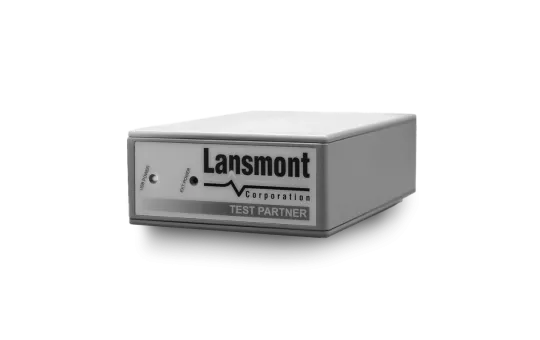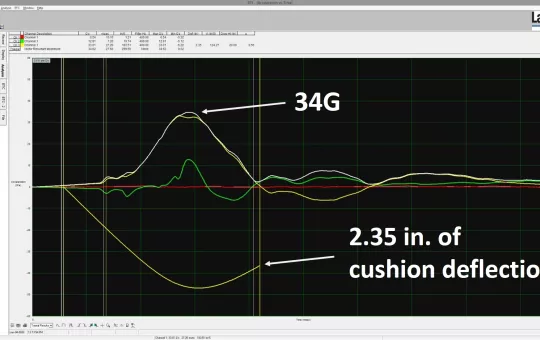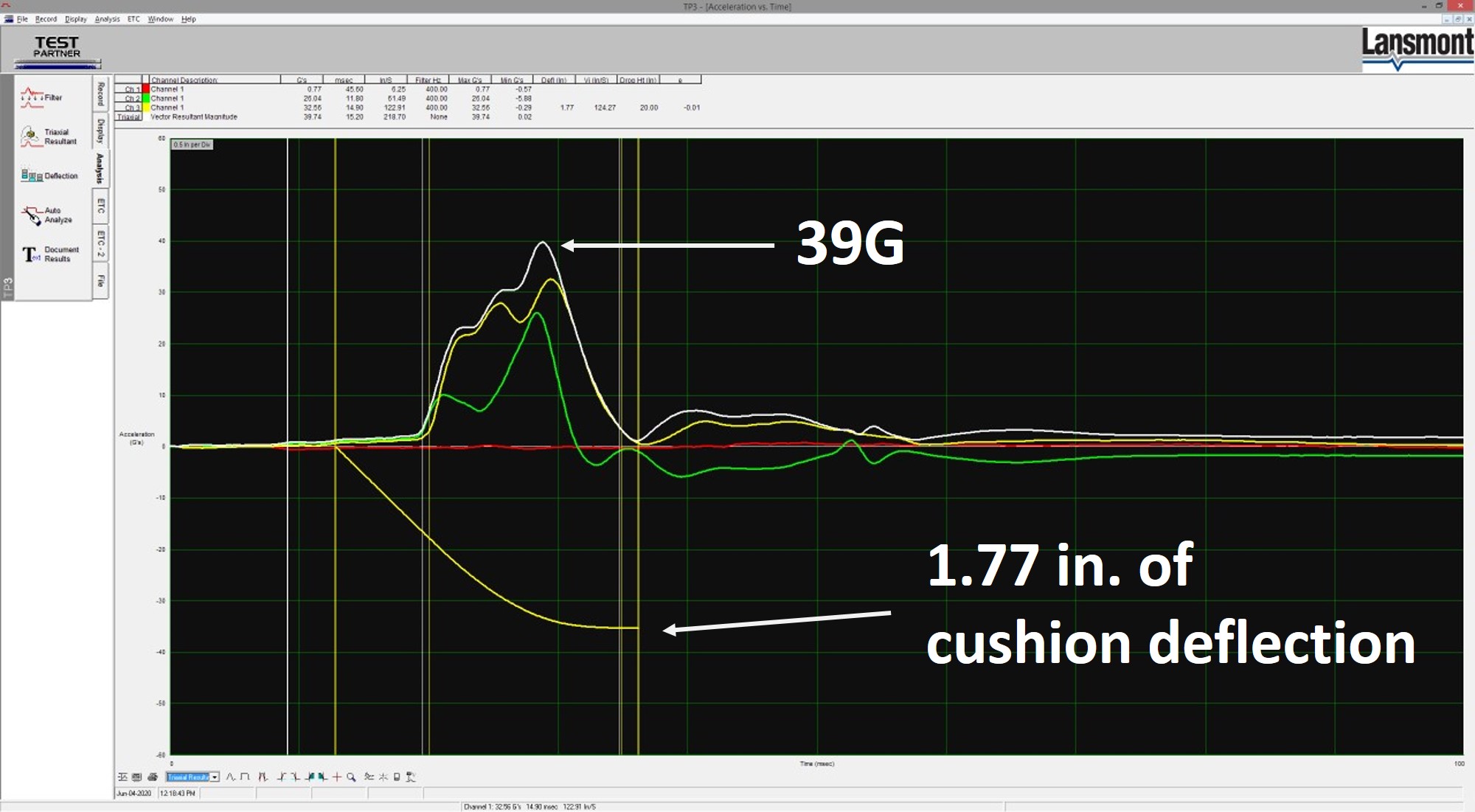

Pass/ Fail? If so, by how much?
Simple qualification drop testing results are typically reviewed in terms of a qualitative pass/fail. The packaged product either survived, or alternatively was damaged.
The pass/fail assessment is often left to the laboratory technician to decide. Yet almost always, there is uncertainty as to “by how much?” did it pass or fail. If the package did its job protecting the product, could it have done the same using less material?
During the engineering and package design phase - often, a shock data acquisition system like Lansmont’s Test Partner is used to measure and monitor drop testing response to provide quantitative test results.
Consider this scenario: a product with a known fragility of 40G is dropped from 36 inches as required by corporate package testing standards. Due to the design of the package (and cushioning), Test Partner indicates that only 34G was transmitted through the package and into the product.
That’s great information – that indicates a good, protective package. But – could we use less cushioning materials and still kept the shock transmission below that 40G value? Using Test Partner as part of your drop testing can provide these quantifiable results – and results like this give you a way to navigate the design/performance workspace. How much did the cushioning deform, did it bottom out? If I only used half the thickness of the foam, could I reduce the thickness by 50%?

Test Partner is specifically designed to support drop testing operations. It is an easy to use, approachable solution that helps you get the job done.
Need to evaluate head space or cushion thickness?
Test Partner provides a deflection calculation to determine how much displacement and movement occurred during the impact.
This is yet another powerful tool that can help users understand exactly how their packaging performed.